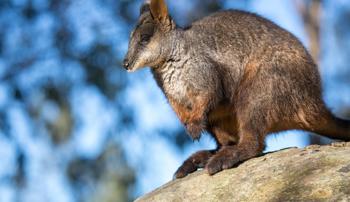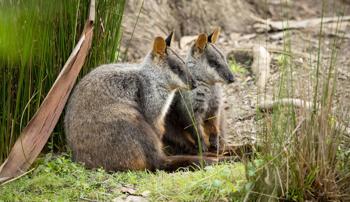Brush-tailed Rock-wallaby (southern population)
In Victoria, the Brush-tailed Rock-wallaby now exists in only two small and isolated locations.
There are less than 30 animals in each place. This agile species lives in rugged, rocky areas and can bound great distances, up and across rocky terrain. They hide among the rocky ridges during the day and emerge at dusk to feed on native grasses and other vegetation. Brush-tailed Rock-wallabies inhabit the region from south-eastern Queensland to eastern New South Wales and Victoria. They are recognised as three genetically distinct populations. The population known as the southern form is the one located in Victoria.

Major threats
Changes to habitat and the impact of feral cats, foxes and goats has led to the isolation of the few remaining populations of the Brush-tailed Rock-wallaby. This separation has created a lack of genetic diversity within the populations, another significant threat to the survival of the species.

The plan for fighting extinction
Zoos Victoria is focussing on the Victorian southern form of the Brush-tailed Rock-wallaby. We are working on a plan to create community awareness for this endangered species and investigating our role in supporting a captive population.
How you can help
- Do what you can to increase community awareness and support for the Brush-tailed Rock-wallaby.
- By visiting our zoos, you are supporting our work to fight extinction.
- Donate if you can. As we are a not-for-profit organisation, all donations go towards our conservation efforts.
- Discover more about local conservation events and join the growing number of wild activists taking action for local wildlife.
